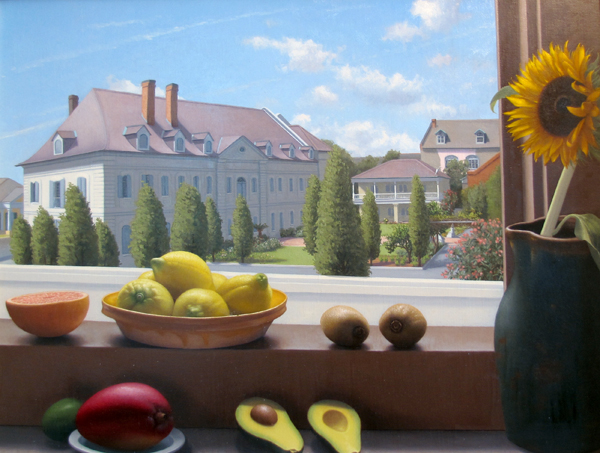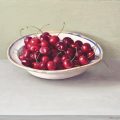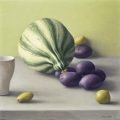Amy Weiskopf
Louisiana artist Amy Weiskopf gained national recognition for her elegant and graceful still-life paintings.

Courtesy of Michael Wilkinson
Ursuline Convent. Weiskopf, Amy (artist)
Amy Weiskopf has gained national recognition for her elegant and graceful still-life paintings. Unlike earlier still-life painters who created cryptic vanitas messages about the transience of life and vanity, Weiskopf’s paintings suggest not the inevitability of decay but the enduring beauty of natural light.
Weiskopf’s interest in art began at an early age while growing up in Chicago, where she was born on January 14, 1957. “My father, an architect who also painted, introduced me to the exceptional Impressionist and Postimpressionist collections at the Art Institute of Chicago. He passed on his love for Postimpressionism, Modernism, and especially Cubism. But, it was Cezanne’s Basket with Apples which was a very early love and remains one of my favorite paintings.” Weiskopf cites in particular the influence of Jean-Baptiste-Siméon Chardin, Paul Cézanne, and Giorgio Morandi. “Each was capable of making all formal elements — form, space, light, color, and composition — work in unison to create a unique, visually complicated and very engaging pictorial image,” she said.
Weiskopf received a BFA degree in 1979 from Washington University in St. Louis, Missouri, and a MFA in 1983 from Temple University’s Tyler School of Art in Philadelphia, Pennsylvania. In 1991, she was awarded a residency at the renowned Yaddo artist colony in upstate New York. In 2003, the Louisiana Division for the Arts awarded her a grant for working artists. Six years later, she was awarded a residency at the prestigious Cité des Arts in Paris. Weiskopf divides her time between Brooklyn, New York; New Orleans; and Tuscany, Italy.
Please click below to view images
All rights reserved by the artist.
*The Louisiana Endowment for the Humanities has included this work in 64parishes.org for the purposes of criticism, comment, teaching, scholarship, educational research, all other nonprofit educational usages under Section 107 of the U.S. Copyright Act.









